After being awarded the $100,000 TED Prize, Paris street artist JR has finally revealed his wish/project to change the world. In this presentation he goes through a retrospective of his phenomenal work and at the very end announces his global art project. 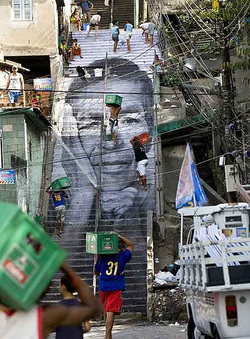 Favela Photo JR himself is skeptical about art's ability to save the world, but his assertion that art provides a neutral ground for discussion is worth considering. It is the conversation that art provokes that has the power to alter perceptions and change consciousness. The art itself is merely a vehicle to create these interactions and share individual stories. So comes the Inside Out Project. In order to spread the untold stories of diverse individuals, JR asks that people all over the world upload black and white portraits to the website. He'll in turn mail you an oversized print of the image for you to post up in your own community. He's arming a global network of street art guerrillas. Since the project's launch on March 4th, 735 images have been uploaded and 150 posters posted. I'm assuming JR requests that people document the postings and send them back while his team will probably also attempt to visit many of these wall exhibitions. Other ways to get involved include donating money or donating wall space. And JR stays true to his graffiti and street art roots by declining any sort of corporate sponsorship or money. (TED money is unconditional) That way he is only beholden to himself and the subjects of the art. Here's to creating a worldwide sidewalk gallery ("expo dureau"?). Let us know if you participate in Inside Out. I may also try to upload a portrait and see what happens. Bonus points to JR for rocking a jacket version of his favela wall postings. The Elvis Costello hat and glasses were also a nice touch to maintain his pseudo-anonymity.
Why go to the Louvre to see art when all you have to do is walk around Paris and look up? With a vibrant street art scene decorating the walls, the city becomes a gallery in itself. Allow me to take you on a tour of a few of Paris' most eye-popping areas. MontmartreLet's start with Montmartre, the bohemian sanctuary that served as home and inspiration for many renowned artists like Picasso, Renoir, and Van Gogh. So it comes as no surprise that this neighborhood is overflowing with illegal creativity. It also has one of the highest concentration of pieces by iconic Paris street artist Space Invader. While other tourists stop to stare at the Sacre Coeur, position your eyes on the walls around it. You'll start to uncover an abundance of hidden treasures peaking out from corners and above street signs. The 13th...meaning the 13th arrondissement, home of the artist tenement/incubator Les Frigos. Start there and in its immediate vicinity, you'll notice art spreading out to the surrounding streets. From there, head towards Place d'Italie, the commercial center of the district. Along the way, you're sure to spot the massive orange mural by Polish street artist M-City jutting out of the Paris gray. M-City recently had an indoor exhibition nearby, but couldn't keep his paints away from the walls outside. Once you arrive at the shopping mall at Place d'Italie, traverse along the narrow back streets in the area and you'll spot a bevy of wheatpastes and stencils including a slew of cutesy cutouts by Paris' THTF (The Hand That Feeds). The Moving GalleryThe third and last stop in this installment of Paris' Street Art Gallery is one that you'll only see if it does stop. It's everywhere and yet nowhere in specific. That's because the graffiti in this case adorns the walls of moving vans. Just as it's become popular in New York to cover moving vans with fully developed graff pieces (since the drivers don't really mind), so too have vans throughout Paris begun to carry more than simply furniture. First trains, now trucks, I hope someday soon airplanes will be next. So keep your eyes peeled and make sure art doesn't pass you by.
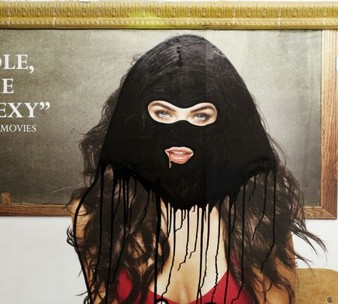 Princess Hijab was here. Just after dawn, when the Paris metro starts running, beware! A looming, long-haired figure skulks around train stations hunting prey. Her targets: consumer advertising. Her weapon of choice: a fat black paint marker. Her method: Hijabisation. Paris' latest street art sensation Princess Hijab stalks the scantily clad women and men on the posters adorning subway platforms and gives them a costume change. In quick, broad strokes, she covers them with a niqab, dripping in wet, black ink. From Dolce & Gabbana to H&M, she leaves a veil trail of topical ad-busting. With the hijab prohibited in schools and the burqa and niqab to be banned from public spaces starting in 2011, Princess Hijab's guerilla art seems like a strike of retaliation. Yet she claims in a recent exclusive interview with The Guardian that she has no judgement on the way people dress, one way or another. She doesn't use the veil as a tool to promote Western feminism or religious freedom. Instead, she uses "veiled women as a challenge." She sees herself as part of a new "graffiti of minorities" that is reclaiming the streets and bringing " inside [Paris] everything that's been excreted out." The niqabs she leaves behind then become a representation for the Paris outsiders who lack opportunities--"the poor, the Arabs, black and of course, the Roma."
The jarring juxtaposition of dripping black veils on the sculpted bodies of massive ads forces people to confront France's larger problems of integration and increasing consumerism. Who Princess Hijab is remains a complete mystery. She reveals nothing about her identity, her religious or ethnic background. Even her sex and gender are unclear and deliberately ambiguous. To her (or him), Princess Hijab is a character. And judging by her costume choice (I'm hauntingly reminded of the girl from The Ring) in this short documentary, her street art is also performance art. Probably a necessity, not just an aesthetic choice, since her pieces get torn down an average of 45 minutes after they're completed. So like Bansky and JR before her, Princess Hijab's true identity remains shrouded in secrecy as her anonymity adds to her cultural appeal. Like Bansky, she subverts mass consumerism with her clever art. Like JR, she gives attention to the marginalized and shares a concern for the disadvantaged communities of the banlieues. But unlike these two predecessors, she imbues her work with a punch-in-the-gut urgency that the others seem to lack, a kind of hardcore fuck-you attitude. It's the gangsta rap to their backpacker rap. Perhaps it's because the veil is such a powerful icon, especially in a Western, Christian space. Or maybe it's the dripping black ink that does it. Either way, Princess Hijab has got your attention. Interestingly enough, Al Jazeera scooped The Guardian months earlier with this video:
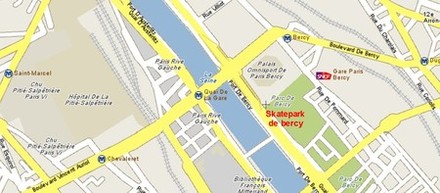 In France it seems that there's no question whether skating is hip hop. B-boy competitions mix with BMX contests, Nas rhymes while Saint Denis youth grind. Paris' skatepark at Bercy is just another iteration of this intertwining culture. Here the energy of young skaters is matched by raw Paris graffiti blanketing every available surface. A skater's explosive aerial tricks compete for your attention with a graff writer's eye-popping aerosol colors. Lying at the edge of Bercy's tranquil park and in the shadow of its Palais Omnisports, the skatepark is easy to overlook. But once there, you become completely enmeshed in the grittiness of street culture. It's impossible to focus your senses anywhere else. Graffeur Jen, whom I met at Les Frigos, first told me about the skatepark, telling me it's another major place for writers to get up. On the cold, dank afternoon I visited, I ran into PESCA who was in the middle of going over someone else's tag on the main wall. Apparently, on these walls, there's no police intervention or fear of repercussion from rival writers.
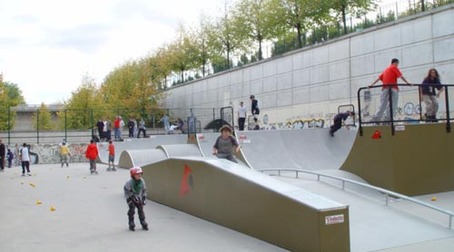 Bercy Skatepark in the early days, before it was graffitified It's only when you go over someone on the illegal walls that you may run into problems. It's like honor among vandals, rules that govern illegal activity. At the park, it's all fair game. Behind him, 8 or more skaters and skateboarders casually hit the ramps, taking smoke breaks in between tricks, chatting it up with their friends or their dog. It felt more like a chill session than a training one. They were young, mostly high school age, and the park was their hang out spot. Ironically, Bercy is the site of the oldest known human occupation in Paris, dating back to 4000 BC. In recent decades Paris has revitalized the area, transforming it into a commercial center and the home of the Ministry of Economy, Finance, and Industry. Yet nestled at its corner is this haven from any of that, a detached shelter for the city's expressive youth. But perhaps that's the point, to draw the skaters and graff writers here and away from the public, keeping them off the city's beloved architecture. Rather than police them, enable them. It's history is unclear to me, but I do know the park has been around since at least 2006. It was also temporarily closed in 2007 as they constructed a roof for it, providing a vital place for youth even during the crappiest of weather (much like this week's when I visited). So there I sat with PESCA at the top of a skate ramp. He told me how Paris writers stick to bubble and block letters mostly, some 3D, but rarely wild style. I asked if he's ever been to New York, and he expressed that he wants to but like other writers here, he spends too much money smoking. During the conversation, one of the inline skaters sped up the ramp. When he reached the summit, he launched into the air like a rocket and somersaulted over our heads. Unphased, PESCA carried on as if nothing happened while I was still sweating for my life. Here, the graff writers are used to the skaters. To them it's all the same.
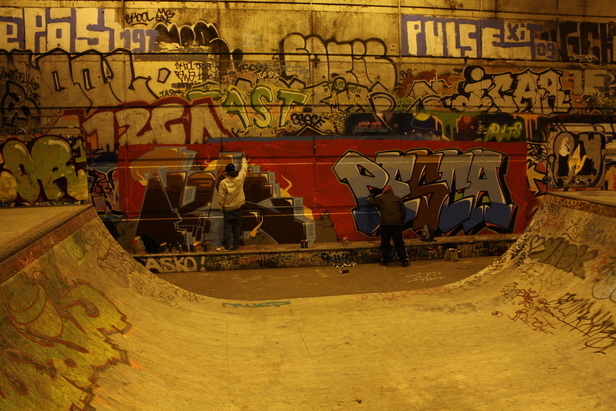 PESCA and TULE get up
 Somewhere between 5 Pointz in Queens and the tenements of the Broadway musical Rent lies Paris' own incubator for art: Les Frigos, literally "The Fridges." I ventured into Paris' 13th seeking a small art gallery for M-City's latest exhibition. I've read on blogs that the 13th is a hotbed for street art, but that didn't prepare me for what I discovered. Steps from the metro station, as I fumbled through my map, bold Krylon colors began seeping into my vision. I looked up and there before me was Les Frigos. "What is this?!" Jutting into the mid-day sky, amidst the clean steel and glass of the surrounding architecture, was a dilapidated castle, completely wrapped in art. Everything from wild style graffiti to Matisse-inspired nudes adorned its outer walls and surrounding fences. Add to that bass-heavy beats blast from its open windows, and all I could think of was "trashy Ivy League frat house?"
If it wasn't already a condemned building, it was certainly shooting for that status.
Though it seemed as though the building was off-limits, I made my way onto its grounds, and onto an open lot that perhaps once served as a moat. Massive graffiti pieces, throw-ups, and tags crawled up the castle's walls. And it wasn't some vestige of the past either. There were three writers there at that moment, spraying paint in the October wind.
 Exterior of Les Frigos The trio comprised OFS graff crew. Three 20-something white guys, dressed in hoodies, drinking Heinekens, and getting their creative vandalism on. One of them wrote "JEN" with a very ornate, flowery style. I asked him if "JEN" was his girlfriend. "No, Jen is my name." Woops. "What does OFS mean?" "It means Oh Fucking Shit crew." "Oh." Jen told me that in Paris there are very few places to paint without getting harassed. This was one of them. No one ever gets arrested here. (Clearly, it was broad daylight and these guys sans disguises were painting away.) And though the groundskeeper occasionally threatens to call the police, he never does.
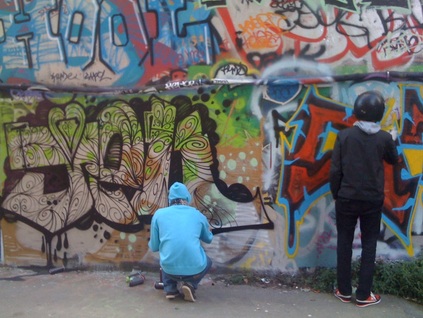 Jen gettin' busy. Why? I asked. Because the building is for squatters, mainly other artists, who obviously don't really mind. And unlike the permission-needed walls of 5 Pointz, which Jen sort of scoffed at, this environment was pretty much live and let live. So writers from all over Paris come to get up, go over other pieces, and maintain the authenticity of illegality. This attitude reflects the essence of Les Frigos. Once a 1920's cold storage facility for trains shipping produce, it has since been de-industrialized and taken to by artists and squatters for the past three decades. They eventually transformed the building and gave it new life by installing water, electricity, bathrooms, etc. It is now home to over a hundred rent-paying tenants and roughly 90 art studios. If you step inside, you're sure to find a labyrinth of floor-to-ceiling graffiti coupled with lively music. However, the future of Les Frigos remains uncertain. It's immediately clear that in the 13th, Les Frigos is the standalone holdout to the rehabilitation and dare I say gentrification of the neighborhood. It's located right in between the National Library of France and the University Denis-Diderot. Meanwhile, though this is a little unclear to me (damn Google translate!) the City of Paris has acquired the rights to the building. What that means for the occupancy agreements of the current tenants has yet to be seen. But until then, Jen and OFS will continue to decorate its walls, and so too will countless others. And for an art form that has always upheld ideas of transience and the finite-ness of things, the future may not really matter. So for now, Les Frigos may be in the cold, but it's still keeping art fresh.
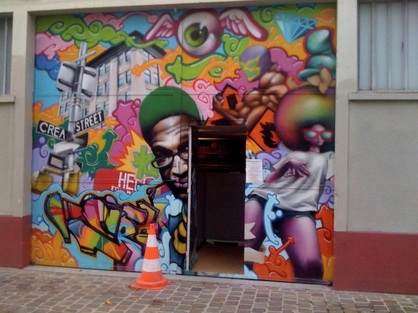 Entrance to Crea Street Delving deeper into the Paris graffiti world, in my latest podcast I interview Olivier Jacquet, graffiti artist, Graff It! magazine publisher, and owner of the street art store Crea Street. I was lucky to get the interview since I stumbled into his store on a random Saturday afternoon waiting for my ride at the Gentilly train station. Olivier was extremely friendly and gave great insight on where Paris graff writers get down, how they're cleverly evading the police, the different styles that come from various cities in France, and who's who in the Paris scene.
A few other interesting things to note: - Olivier is a family man, best evidenced by the fact that his 5-foot-tall mother was working behind the counter with him and knew every product in the store. Sadly, she declined to be photographed.
- Olivier also mentioned (if memory serves) that the graffiti scene in Paris goes way back to at least 1980.
- The woman that came in and started interpreting for us purchased not spraypaint, but a can of wood furniture varnish. Crea Street really does serve ALL creative types.
- Olivier has been publishing Graff It! since 1994!
- Olivier seems to frequent New York City and is tight with legendary graff writers like Cope2 and TATS CRU.
- The track "Police" that bookends the podcast is by Supreme NTM, the same Saint-Denis rap group that Olivier mentions had a significant impact on the graffiti scene since both were also graff writers. Here's their video for "My People" which celebrates graffiti culture:
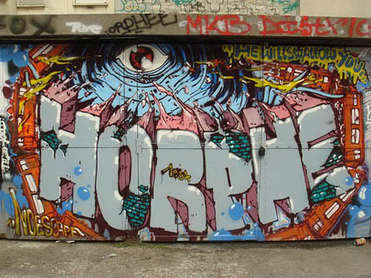 The top taggers in Paris according to Olivier are:
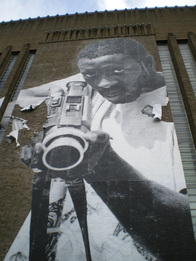 The 2011 TED prize for $100,000 has just been awarded to anonymous. TED has not revealed the award recipient's name, only a pair of letters--JR. They may be initials, they may be shorthand for "Junior," or they might mean something else completely different ("Jubilant Rhinos!"). One thing the letters do stand for, though, is thought-provoking street art. JR is a Paris-bred street artist, or as he prefers, photograffeur, a play on the words photographer and graffeur, the French word for graffiti artist. As his origin story goes, he started out writing graffiti until he happened upon a camera on the Paris Metro. He began photographing the youth of the banlieues and wheat-pasted their larger-than-life-size images all over the suburbs. Illegally, of course.
Then he went global. In the past decade, he's postered urban slums all over the world with massive images of their local inhabitants. From favelas in Rio to rooftops in Kenya, he has gotten up. His goal: to draw attention to the humanity of everyday people in places that are far too often overlooked, impoverished, and plagued by conflict. As he says, "It's about breaking down barriers" through the image of the human face. "Everything is about eye contact." In 2006, returning to his native Paris one year after the country erupted in youth riots, JR snapped photos of the suburban youth from Montfermeil, Clichy-sous-Bois, and others. This time, instead of posting the young, brown faces in their own neighborhoods, he took their visages straight to the center of bourgeois Paris. The city ultimately embraced the work, "Portraits of a Generation," and in fact wrapped it's own city hall with these images, most likely in hopes of diffusing tensions and promoting tolerance. 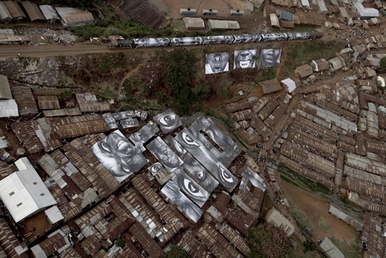 Shrouded in anonymity and myth, he maintains a Banksy-like persona of mystery, intelligence, and spectacle. But unlike the sardonic Brit, JR takes up social consciousness as his explicit agenda. He replaces humor with a sincerity to depict the lives of his subjects. And in fact, the local people he photographs also help him wallpaper their neighborhoods. Community engagement leads to community empowerment. TED lauds his work as "pervasive art" that engenders two important things: "The images are transported to London, New York, Berlin or Amsterdam where new people interpret them in the light of their own personal experience. And ongoing art and craft workshops in the originating community continue the work of celebrating everyone who lives there." [bold emphasis added by me]The TED prize committee hopes that JR's work could catalyze the entire TED community to support a philanthropic art project. Now with a hundred grand in hand, what will the photograffeur do next? Previous TED awardees, such as Bill Clinton, Bono, and writer Dave Eggers, have started various awareness campaigns. The most recent awardee, The Naked Chef Jamie Oliver has used the money to promote healthier eating habits in North America and the UK. Knowing JR who keeps the local community in mind, he will probably keep doing his thing but just go bigger. Who knows? Maybe this time next year satellite pictures of North Korea will have gigantic photographs of youthful eyes staring up at us. Here's a great video of his recent work displayed along the Seine in Paris.
In this slide show, I take a look at the work of Paris street artist Speedy Graphito in his latest show at Art Partner Galerie. He comes from Paris' first generation of graffiti and street artists. In this exhibition, he draws on that long history, incorporating a number of street art styles and playing on the evolution of street art from its days as loathed youth vandalism to its current stature as darling of the art world. Like Bansky and Mr. Brainwash (whose work is appearing on the streets and stores of Paris right now), Speedy is cashing in but with a very knowing, self-aware wit. Here Speedy demonstrates his process as he prepares his painting "Dead or Alive."
|


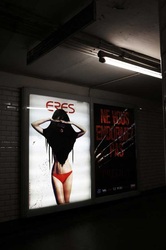
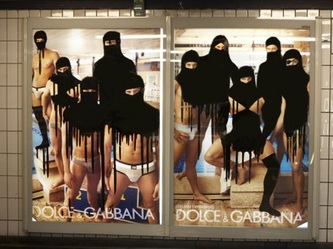
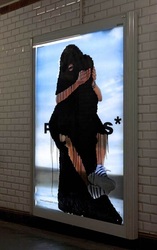
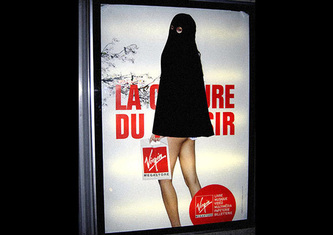







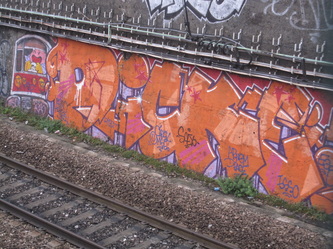
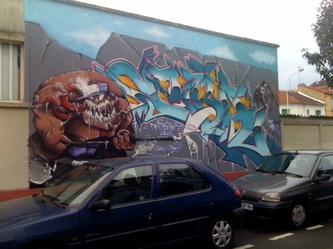

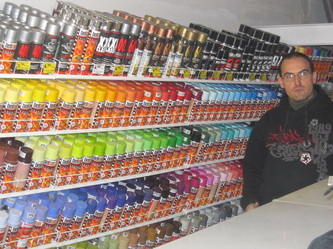
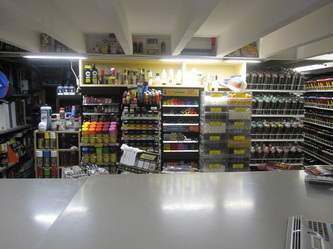
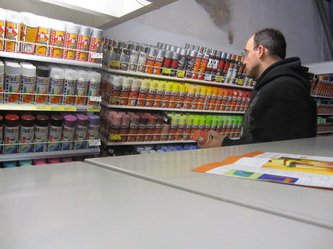

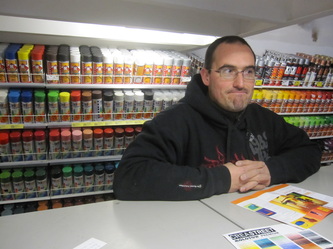




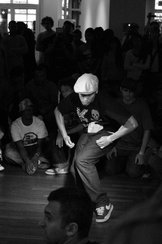
 RSS Feed
RSS Feed